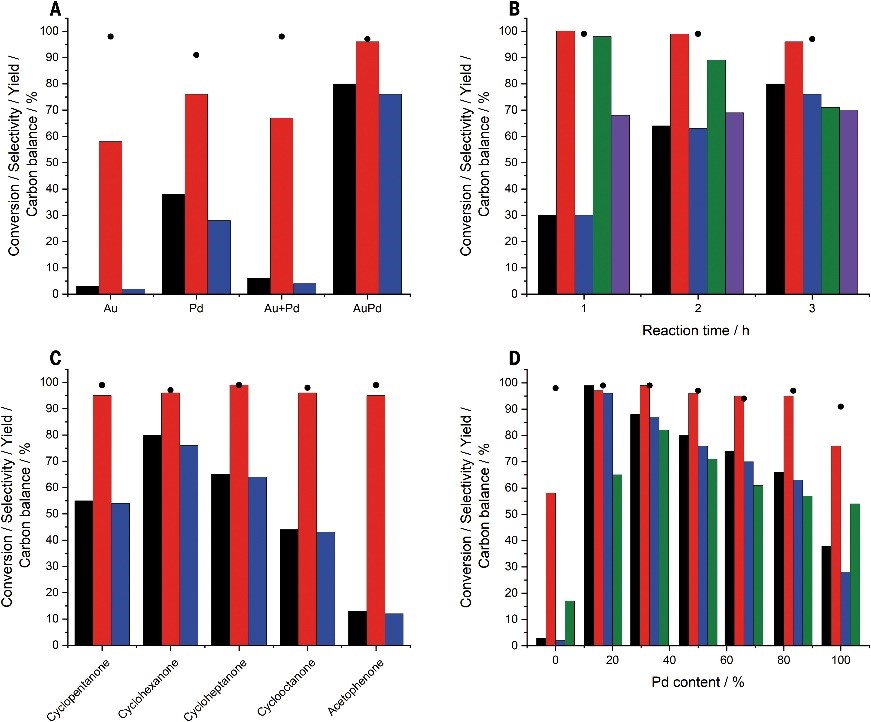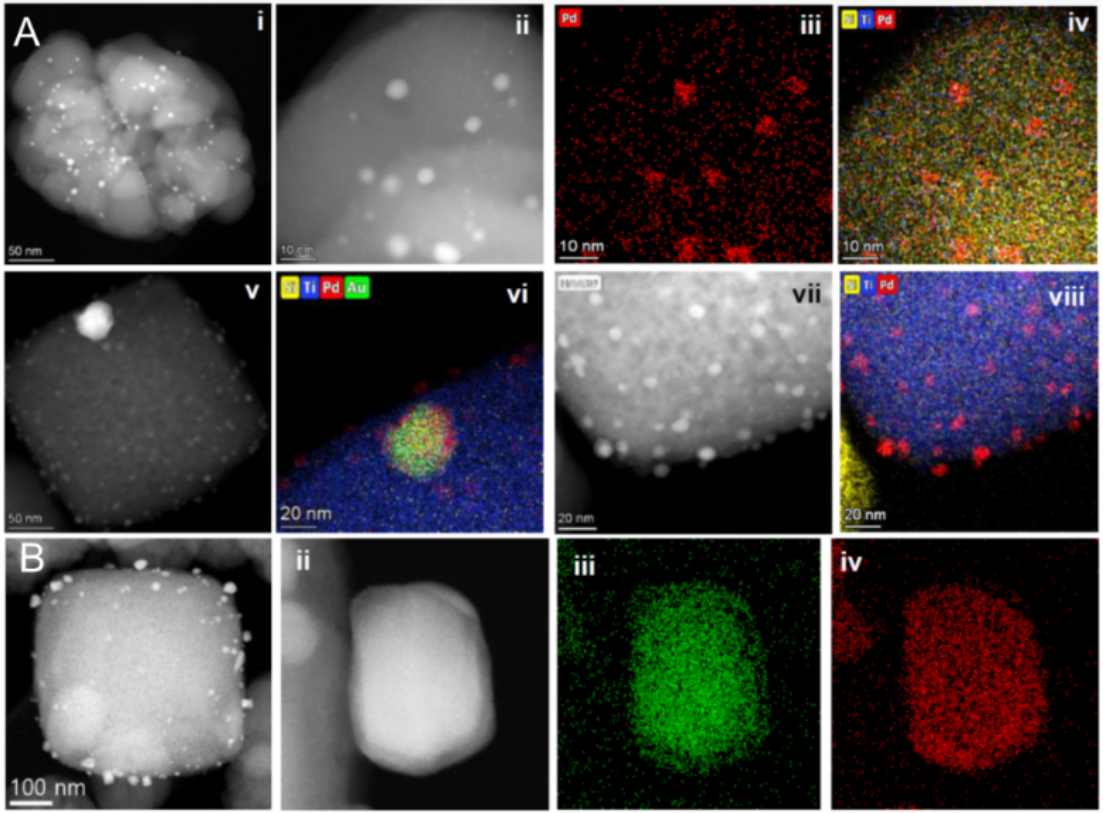On May 6, 2022, the top international academic journal Science published an article of Profs. Liwei CHEN and Xi LIU from the School of Chemistry and Chemical Engineering, Shanghai Jiao Tong University, in collaboration with Prof. Graham J. Hutchings from Cardiff Catalysis Institute, Cardiff University, entitled “Highly efficient catalytic production of oximes from ketones using in situ-generated H2O2”. Richard J. Lewis, Xi LIU and Graham J. Hutchings are co-corresponding authors. This work was supported by the In-situ Centre for Physical Sciences and the Frontiers Science Center for Transformative Molecules at Shanghai Jiao Tong University (SJTU).

Hydrogen peroxide has advanced oxidation capacity and its reaction product is water, which makes it suitable for green synthesis as an environmentally friendly oxidant. Industries use titanium silica molecular sieves as catalysts for the preparation of nylon 6 monomer, cyclohexanone oxime, by ammonia oxidation of cyclohexanone with hydrogen peroxide. This method substantially simplifies the production process, and makes the whole production process greener and more economical by greatly reducing the generation of low-value by-products and waste while obtaining high conversion and high selectivity. Although hydrogen peroxide is playing an increasingly important role in the development of green chemistry, current industrial manufacture of hydrogen peroxide via the anthraquinone oxidation method is not "green" enough: it has significant drawbacks such as high investment cost, complex process, possible environmental pollution, and expensive storage/transportation/use. If in-situ methods can be harnessed to directly generate hydrogen peroxide to complete the catalytic ammonia oxidation, it can substantially save energy and equipment investment, which has profound significance for the development of green chemical engineering and chemical synthesis.

Fig. 1: Catalytic activity of a mixture of supported 0.66%AuPd/TiO2 and TS-1 catalysts toward the ammoximation of cyclohexanone through the in situ production of H2O2.
In this breakthrough, the researchers designed a titanium-silica molecular sieve loaded with gold-palladium alloy catalyst to achieve a one-step highly selective preparation of cyclohexanone oxime directly from hydrogen, oxygen, ammonium bicarbonate and cyclohexanone under conditions close to industrial hydrogen peroxide ammonia oxidation, obtaining nearly 100% cyclohexanone selectivity, nearly 100% ammonia selectivity and 67% hydrogen selectivity, and the yield of cyclohexanone oxime is the same as that obtained by industrial hydrogen peroxide ammonia oxidation. The yield of cyclohexanone oxime is the same as that obtained by industrial hydrogen peroxide ammonia oxidation, which verifies the new path of green chemical production by coupling in-situ hydrogen peroxide production with ammonia oxidation. The catalytic activity remained stable after 40h or 250h experiments without any significant decrease. The researchers further evaluated the economics of this catalytic system and found that assuming a catalyst lifetime of 2.3 years, the cost of cyclohexanone oxime production was reduced by 13% compared to current industrial costs. This economic evaluation does not take into account the additional savings associated with the ex situ preparation of hydrogen peroxide and the transport and dilution processes.

Fig. 2: High-resolution electron microscopy images showing the binary structure in composite AuPd catalysts.
This study successfully integrated in-situ hydrogen peroxide synthesis with existing chemical production for the first time through advanced catalyst design, and convincingly demonstrated the economic feasibility and of the new green chemical route using in-situ hydrogen peroxide synthesis.
This work was financially partially supported by the National Science Foundation of China. The In-situ Centre for Physical Sciences, SJTU, contributed to the materials characterization.
Link to the article: https://www.science.org/doi/10.1126/science.abl4822
In-situ Centre for Physical Sciences, Shanghai Jiao Tong University
In-situ Centre for Physical Sciences, Shanghai Jiao Tong University, established in 2020, is a university-level interdisciplinary research platform headed by Prof. Liwei CHEN, Distinguished Professor at the School of Chemistry and Chemical Engineering, SJTU. Based on a wide range of in-situ characterization needs in the field of physical sciences, the Center integrates advanced microscopy, spectroscopy, and cutting-edge computational approaches to realizes in-situ and operando high-resolution imaging and physicochemical characterizations through designing and developing new in-situ devices and big data processing platforms. The Center provides important technical support to frontier research in physical sciences such as advanced materials, energy chemical engineering, renewable energy technology, biotechnology and optoelectronic information technology. The Center is equipped with the world-leading analytical instruments, including in-situ aberration-corrected environmental scanning transmission electron microscope, in-situ X-ray absorption spectrometer, in-situ X-ray diffractometer, scanning electron microscope and atomic force microscope. Currently, the Center has published more than 60 papers in leading journals such as Science, Nat. Energy, Nat. Catal., Nat. Comm., J. Am. Chem. Soc. and Angew. Chem.
Translator: Chenyun SUN
Reviser: Liwei CHEN, Xi LIU, Xiaoke HU
Source: School of Chemistry and Chemical Engineering

